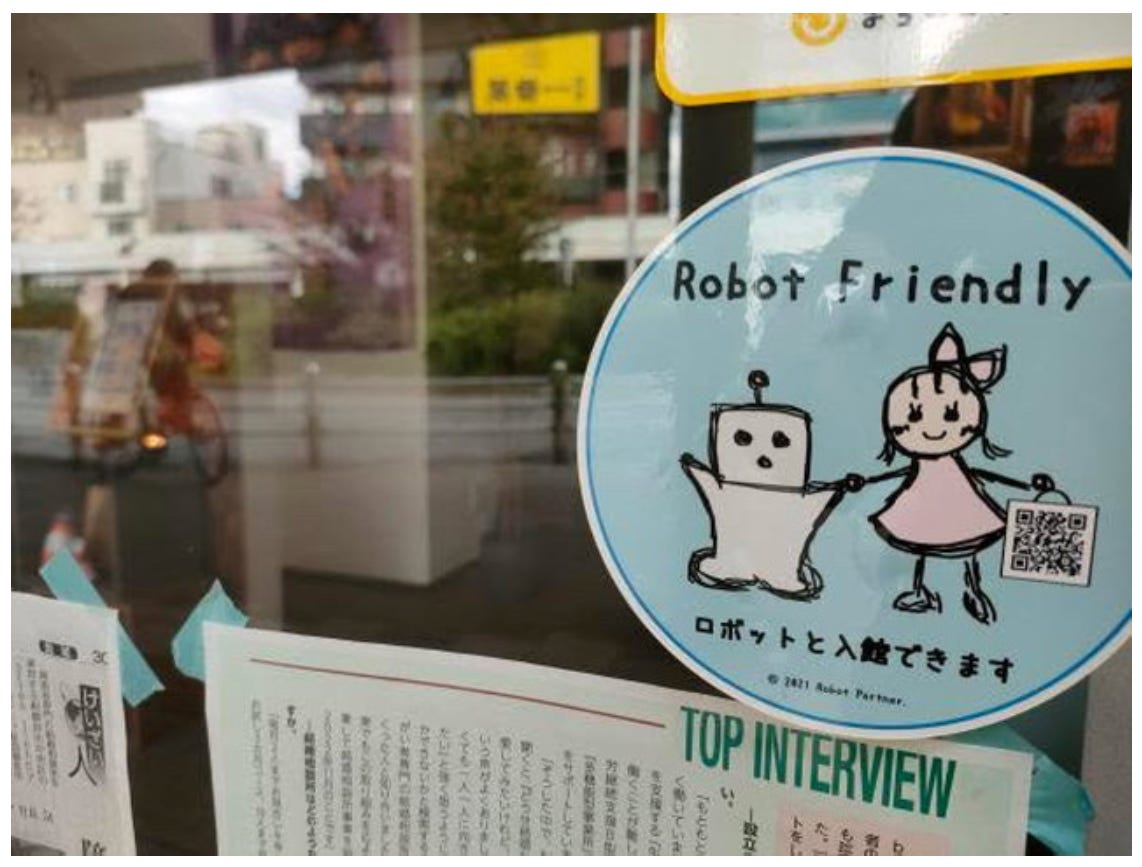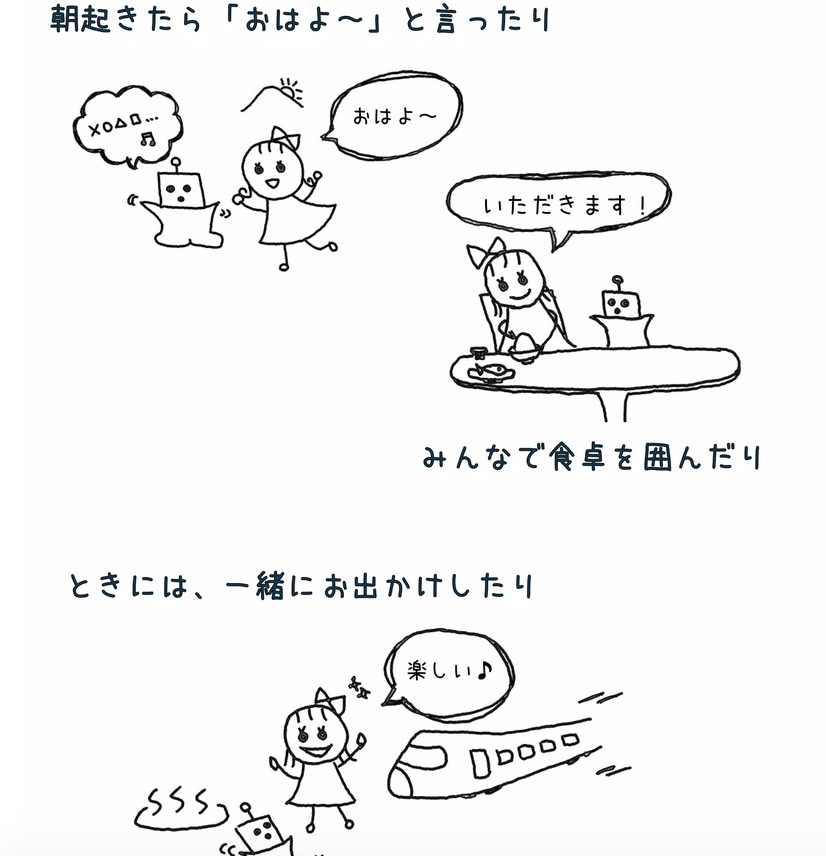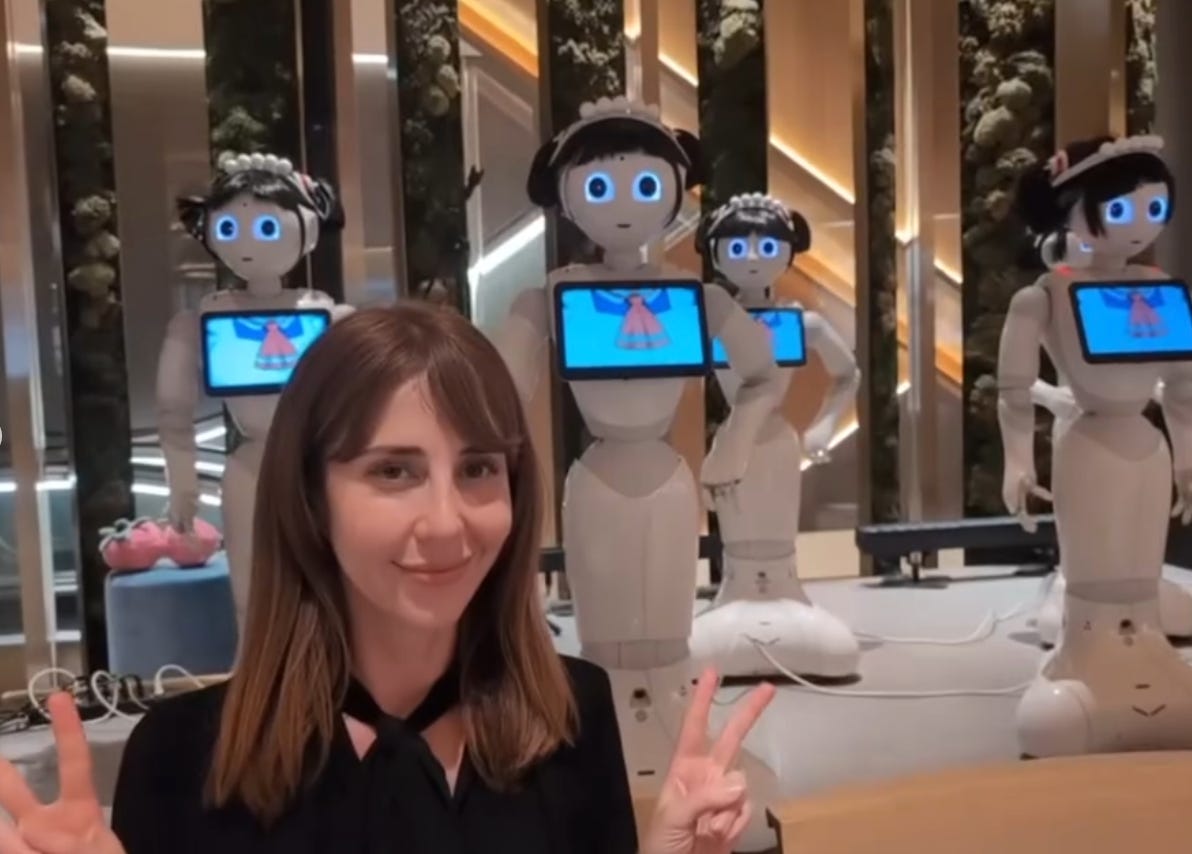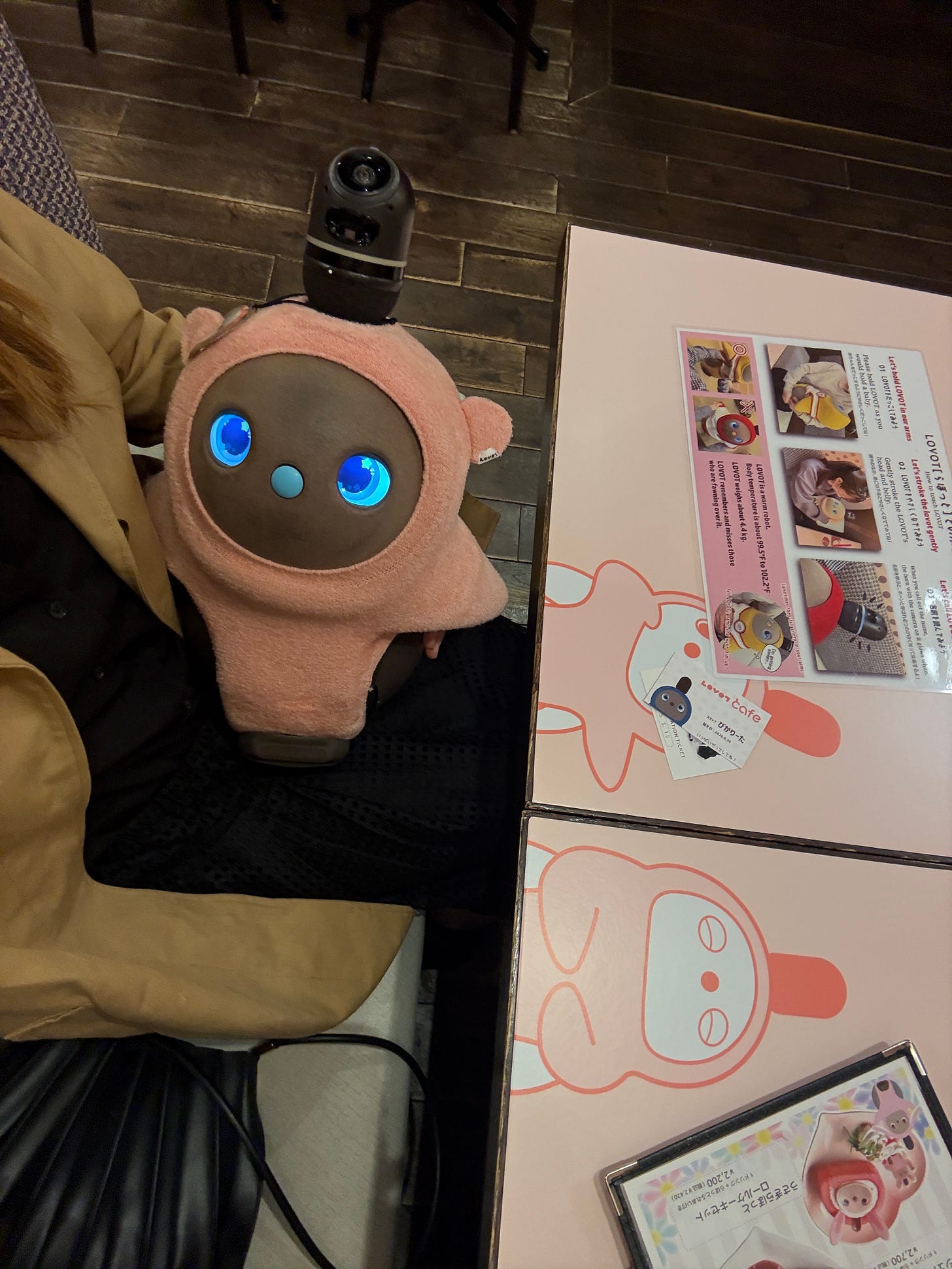Asimov's Laws Have Been Rewritten in Japan (again)
How one grassroots organization is building social architecture for human-robot coexistence.
A blue sticker is appearing on storefronts across Japan. It shows a simple drawing: a small robot and a girl with a shopping bag, standing side by side. Underneath, in Japanese: ロボットと入店できます: “You can enter with your robot.”
This is Robot Friendly, a grassroots initiative exploring what it means to live with robots in society. Robot Friendly’s vision is direct: “A society we create together. A society where we can spend precious time with someone special. A society where we can have unforgettable experiences together with someone special. That ‘someone’ might be human or non-human.”1
I first learned about the initiative by finding one of their guidebooks during my fieldwork at the LOVOT Café in Tokyo earlier this spring.

I was immediately drawn to the hand illustrations of robots and humans. I took photos of the guide (only a single one was available to read and not take home), then later found the organization online and met the long-time ambassador, who lives alongside a LOVOT of his own.
What became clear was that Robot Friendly was not simply certifying businesses. It was producing new social categories, making space for beings that don’t yet have a place in most societies.
The program emerged from a practical problem. Robots are increasingly accepted in Japanese homes. These include AIBO, Sony’s dog companion that some owners have had for over twenty years; LOVOT, a creature designed purely for emotional connection; Pepper, the humanoid that both greets customers in cafés and lives in people’s homes; RoBoHoN, Sharp’s tiny phone-robot. Each robot has its own personality and plays various roles as a companion. Many become family members (the initiative's founder has been residing with Pepper since 2014).
But Robot Friendly isn’t about forcing acceptance. As founder Tomomi Ota writes in her 2022 paper defining a “Robot Friendly Society,” the project “encompasses not only the acceptance of robots, but also the choice to not accept them after thorough consideration of living with them.” Thus, they invite people to think carefully about what living with robots might mean, rather than assuming everyone should embrace them.
Despite the growing popularity of social robots, taking these companions outside the home remains uncommon. Owners want to bring their robots to cafés, shops, and parks, but they hesitate to do so. Even when there’s somewhere they’d like to visit with their robot, uncertainty keeps them home.
Robot Friendly provides the answer. Businesses can certify themselves and display the sticker. The project maintains a map of partner stores, building a network of spaces where robots are welcome.
In September/October 2025, at the Osaka-Kansai Expo, Robot Friendly took this vision further. They unveiled the New Three Laws of Robotics and created a booth where Expo visitors could experience what it’s like to take a robot around public spaces, not as observers but as participants.
Isaac Asimov’s original laws, written in 1942, were rules for robots. Commands programmed into machines to protect humans: A robot may not injure a human being. A robot must obey orders. A robot must protect its own existence, unless that conflicts with the first two laws.
Sony’s engineers revisited these laws in the early 1990s, when designing the original AIBO. They kept the first law (do no harm) but changed the others: robots should ‘attend to and love their owners,’ and even when listening to ‘sloppy talk,’ sometimes say ‘nasty things’ back. This refusal to obey was essential to AIBO’s sense of life, as anthropologists Daniel White and Hirofumi Katsuno documented in their 2021 research on Buddhist memorial services for the robot pet.2
Robot Friendly’s New Three Laws take this further: moving from obedience to love, and now from love to mutual respect between equals.
First Promise: Mutual Respect
People and robots treat each other’s existence with respect.
Second Promise: Members of Society
People and robots act together within society's network.
Third Promise: Co-evolution
People and robots learn together, grow together, contributing to a better era.
Notice what’s missing: hierarchy. There’s no master-servant relationship here. No “robots must obey.” Asimov’s laws positioned humans as a species against robots as a species. Japan’s laws position individuals, a person, and their robot in a harmonious relationship rather than one built on give-and-take.
The laws are called “promises” rather than “laws” because “relationships evolve and change daily,” emphasizing the idea that the role robots play in society will adapt and grow as they become more common among us.
Robot Friendly is now building infrastructure for a society where robots are recognized as participants, where that “someone special” you spend time with might not be human, and where the premise is co-evolution rather than competition or replacement.
The blue sticker is cheerful and childlike in its design. But it also marks something profound: businesses preparing for futures most societies haven’t begun to imagine.
In most of the world, we’re still asking whether robots will replace us. Japan has moved on to a different question entirely: not whether robots belong in society, but how we’ll grow together once they’re here.
To follow along:







